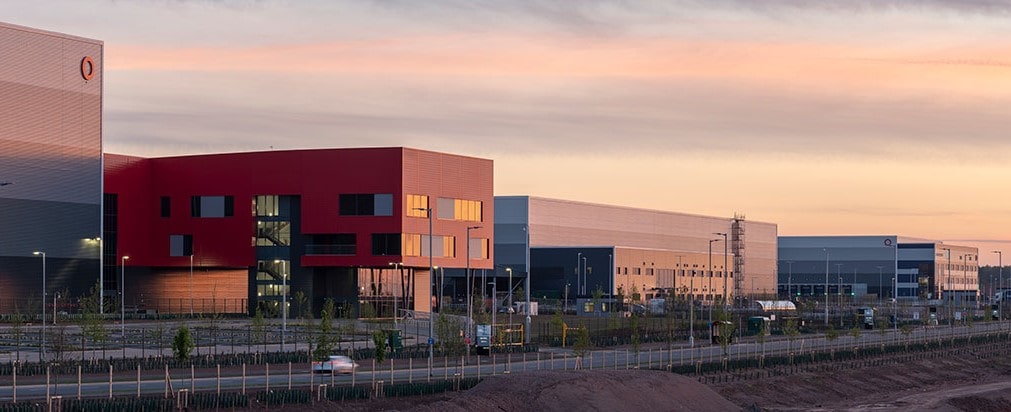Features - Business
A backward glance on transport and logistics infrastructure
6 Mar 20

Ahead of this year’s UK Infrastructure Show (UKIS), which will be taking place on the 22nd April at the National Exhibition Centre in Birmingham, it would be worthwhile to look back on the infrastructure projects which have defined the past year in the construction industry.
One subsector, of the more broad infrastructure sector, which should doubtlessly be acknowledged is that of transport and logistics, as the projects which have assisted with the movement of people and materials across the UK have been undisputedly important to the construction industry in a year which has been hindered by political misdirection.
Despite the fact that most construction projects were forced to endure delays from the uncertain political situation which the UK experienced throughout 2019, particularly towards the end of the year, many infrastructure projects continued as planned and therefore supported the entire construction industry in a time where sector value and output was on the decline.
This is doubtlessly due to the majority of transport and logistical infrastructure projects being commissioned and organised between companies and organisations within the UK. For example, the construction of most roads, railways, and ports are commissioned by local authorities and government departments, such as local councils and the Department for Transport.
According to Glenigan’s Construction Industry Review for December 2019, the value of civil engineering contracts, which is relevant as infrastructure projects are usually contracted to civil engineers, measured at double the value of December 2018, with the total value of contracts reaching total of £4,940M, despite the number of project starts being 67 per cent lower.
Ultimately, this healthy sector value can be attributed to major projects in the subsector of transport and logistics, covering the likes of HS2 and Crossrail, providing contract values that are so steep that they could effectively support the construction industry for another year.
In addition to this, the transport and logistical infrastructure projects which are being planned and organised within the private sector are generally being conducted by companies within the UK, meaning that their progress and approval will not likely be dependent upon the progress of Brexit and Britain’s relationship with the European Union.
One example of a major logistics infrastructure project from the private sector is the SEGRO Logistics Park East Midlands Gateway which covers a total area of 700 acres with planning consent for up to 6Msq ft of logistics accommodation and a 50 acre Strategic Rail Freight Interchange (SRFI).
Furthermore, the development contains eleven logistical units as well as the aforementioned rail terminal, container storage, a bus interchange, and motorway connections through Junctions 23a and 24 of the M1 via the A453. It is unknown how much the entire scheme has cost but the road improvements and rail terminal alone have cost approximately £100M, placing the estimated cost of the entire project into the hundreds of millions.
Another example of a major logistics infrastructure project in the private sector is ICON, a £150M logistics and creative content studio at Manchester Airport that is owned by a joint-venture of The Hut Group (THG) and Stoford Developments. The development itself includes logistics and content creation facilities, totalling an area of 168,000sq ft, and office space, totalling an area of 104,000sq ft over four floors, with the appointed contractor being named as Winvic Construction Ltd.
Having recapped the transport and logistics infrastructure projects of 2019, the best way to now plan for the foreseeable future within the infrastructure sector will be to attend UKIS, where infrastructure professionals will be sharing their expertise and knowledge of the projects to come.

Book your place to attend now: Click here
For exhibition packages to showcase your company: Click here
If you would like to read more articles like this then please click here.
More Features
- Ten years of progress on payment, pre-qualification and skills
19 May 25
The industry has made significant progress on late payment, pre-qualification, and competence since the formation
- Pagabo provides clarity on impacts of new NPPS and PPNs
12 Mar 25
The Labour government’s new National Procurement Policy Statement (NPPS) sets out strategic priorities for public
- How is the Procurement Act going to drive social value
24 Feb 25
The regulations laid out within the Procurement Act 2023 will go live today.
-
-
More Features
- Why early MEP design collaboration holds the key to smarter buildings
24 Jun 25
Working closely is essential to ensure that all aspects of a building’s design contribute to its overall energy performance.
- Solar on all new homes must align with 1.5 million homes target
20 Jun 25
The Government have said that solar panels will be included in the FHS, leading to installation on the vast majority of new build homes.
- Identify the source of moisture to protect your timber buildings
10 Jun 25
Timber rot, which occurs when moisture penetrates and remains in timber, is a common issue. While moisture-damaged timber buildings can be repaired, too often the
-
-
Most Read
- Heathrow cleared for take-off
- SMEs: building the future
- South East Construction Expo 2018 comes to Sussex
- Scottish construction collateral warranties: timeless, or on borrowed time?
- House Prices stable
- Canterbury Council invests in social housing
- Tougher requirements needed for company chiefs
- BAM Nuttall targets vibrating tools
- Construction and road interest groups seek solution to road congestion
- CITB launch skills analysis for Scottish construction
- National Winners revealed at NHBC Health and Safety Awards
- First UK spaceport to launch in Sutherland, Scotland
- Spotting the signs of modern slavery
- Working at Height safety breaches rise
- Mace: Modern methods of construction could create £40Bn export market






